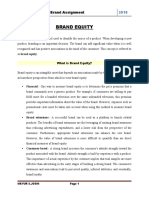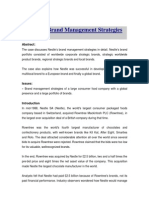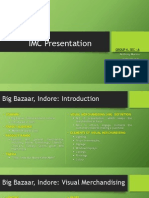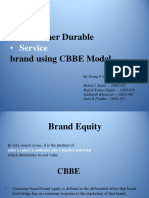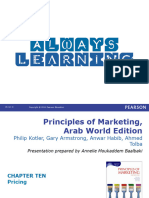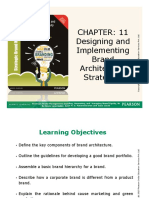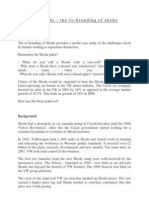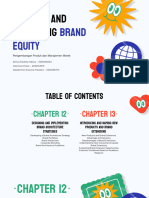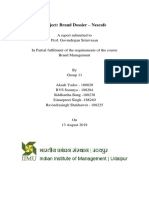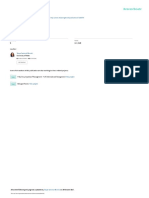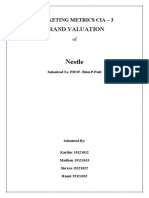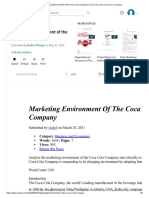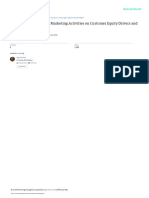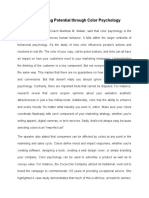0% found this document useful (0 votes)
478 views11 pagesYoung & Rubicam Brand Valuator Analysis
Shan Food Industries is a Pakistani producer of spice mixes founded in 1981. It has since become one of Pakistan's largest exporters of packaged foods, operating in over 65 countries globally. Young & Rubicam's Brand Asset Valuator model assesses brands across four pillars: Energized Differentiation, Relevance, Esteem, and Knowledge. Applying this to Shan Foods shows their strong brand positioning, successful category extensions into new products, and global expansion through exports.
Uploaded by
Mëhâk AfzalCopyright
© © All Rights Reserved
We take content rights seriously. If you suspect this is your content, claim it here.
Available Formats
Download as DOCX, PDF, TXT or read online on Scribd
0% found this document useful (0 votes)
478 views11 pagesYoung & Rubicam Brand Valuator Analysis
Shan Food Industries is a Pakistani producer of spice mixes founded in 1981. It has since become one of Pakistan's largest exporters of packaged foods, operating in over 65 countries globally. Young & Rubicam's Brand Asset Valuator model assesses brands across four pillars: Energized Differentiation, Relevance, Esteem, and Knowledge. Applying this to Shan Foods shows their strong brand positioning, successful category extensions into new products, and global expansion through exports.
Uploaded by
Mëhâk AfzalCopyright
© © All Rights Reserved
We take content rights seriously. If you suspect this is your content, claim it here.
Available Formats
Download as DOCX, PDF, TXT or read online on Scribd
/ 11



